Five-lined Skinks
Ontario’s only lizard species happens to be one that utilises a clever survival tactic — dropping its tail when scared.
My sister-in-law held the skink in the palm of her hands. Then she shrieked. Beverly dropped the lizard which scrambled into the undergrowth. But it left something behind – a writhing tail.
The tail, shouting “look at me!” had performed exactly as nature intended. Its owner had escaped.
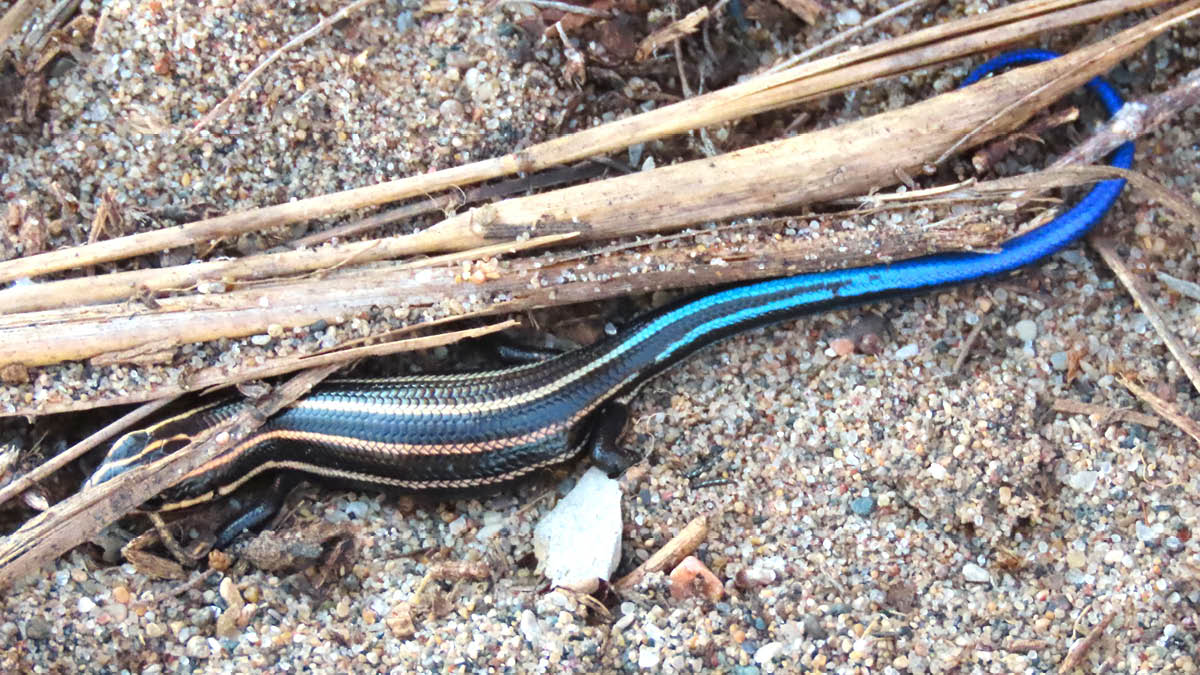
Ontario has only one lizard species, a disappointment for a reptile-lover like me. These five-lined skinks shirk the Headwaters region, preferring to live in sandy habitats in the extreme southwest – Point Pelee, Rondeau Provincial Park and The Pinery – and along the southern edge of the Canadian Shield, roughly from Kingston to Georgian Bay.
What a skink wants is plenty of sun, in common with its lizard kin the world over. This solar dependency explains, in part, their distribution in the province. Sandy places and areas where Canadian Shield rock dominates are characterized by a habitat mosaic of forest and sunlit openings.
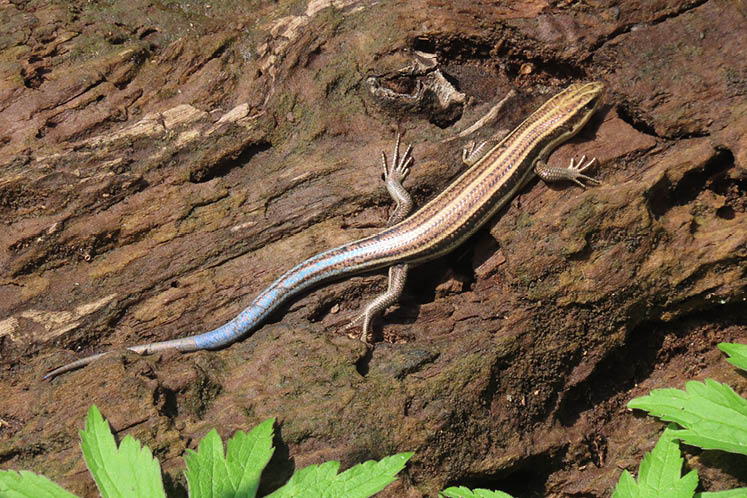
Headwaters, historically, was almost fully shaded by trees – a likely reason skinks are not found here.
These lizards also need plenty of pristine habitat and ground level complexity – lots of logs and stones to hide under and within.
The phenomenon that frightened my sister-in-law is called “caudal autotomy,” or less delicately, “self-amputation.” Tail loss obviously has survival value because many lizards employ it. As do some salamanders, such as the red-backed salamanders living in Headwaters forests.
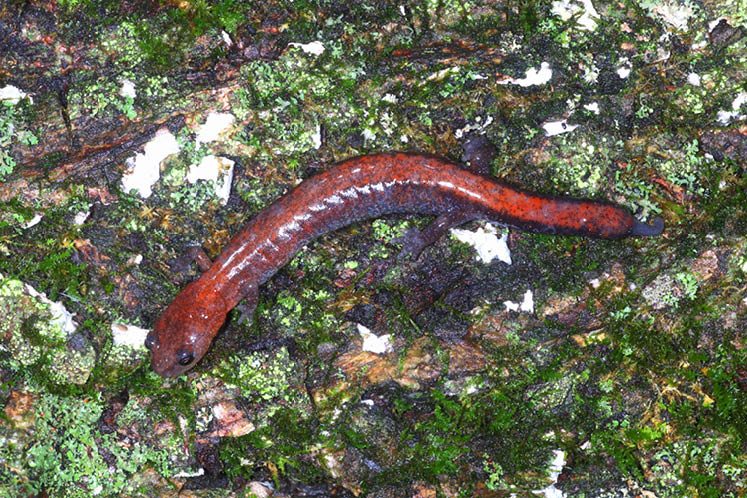
Cleaved tails invariably thrash about, distracting predators – and scaring people. Given time the tails grow back, but generally smaller and less flexible.
I’m puzzled by the interaction of a garter snake and a skink, displayed in the photos below. At Rondeau Provincial Park one year, I watched the snake approach the skink basking on a fallen tree. The skink remained in place, while the snake crawled right over it!
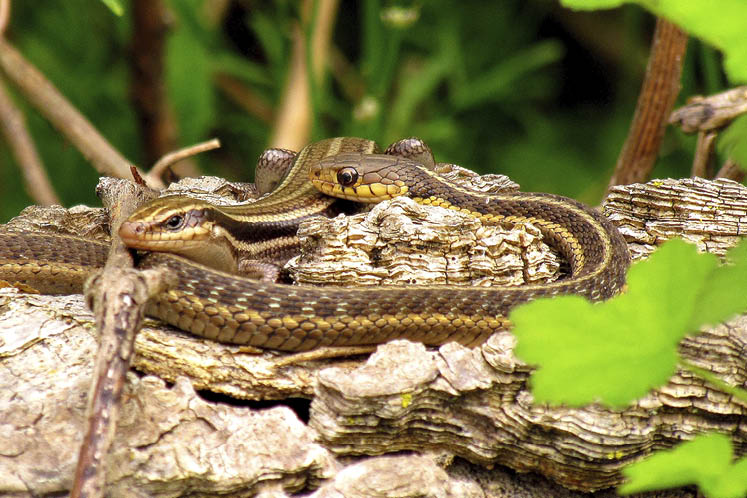
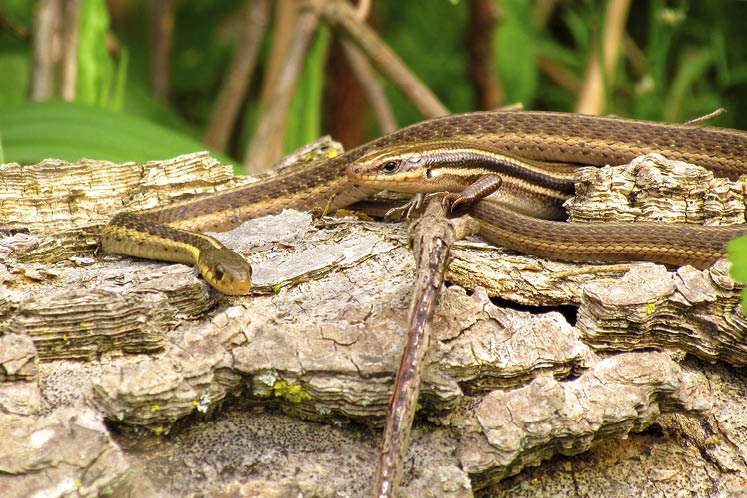
Was the snake unaware of the lizard? Do skinks taste bad?
Mysteries like this stoke my love of nature.
Related Stories
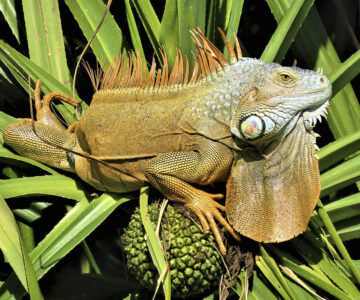
Not All Invaders Are Bad
Feb 7, 2023 | | Notes from the WildDuring a trip south, naturalist Don Scallen gets a closer look at introduced lizards in Florida and asks questions about our own invasive species in Ontario.
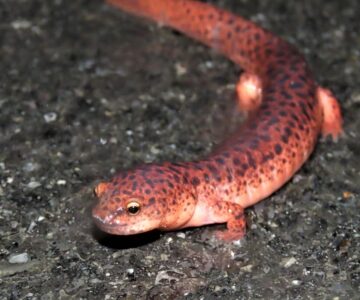
Streamside Salamanders
May 3, 2023 | | Notes from the WildLong-tailed and tiny-legged, these slow moving salamanders face formidable challenges as our urban footprint grows.
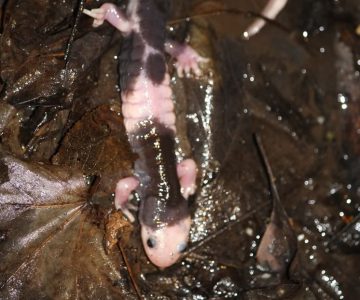
The Return of the Salamanders
May 9, 2019 | | Notes from the WildThis year I managed to take video of the underwater breeding of spotted salamanders.
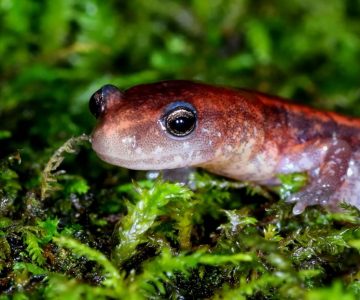
Autumn Salamanders
Oct 2, 2018 | | Notes from the WildSmall wonder so many salamanders are active at this time of year, seeking last suppers of grubs and spiders, crickets and millipedes.






